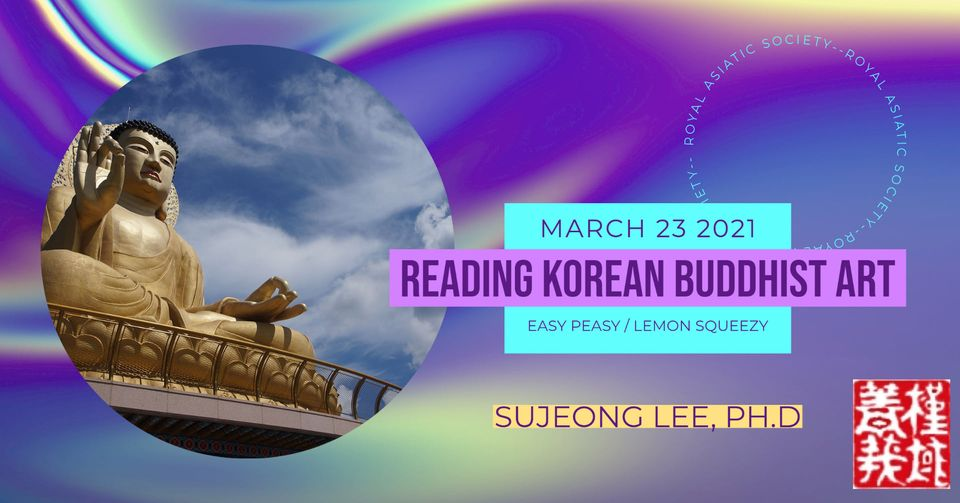Sharing the lecture held on March 23, 2021.
Lecture title: Reading Korean Buddhist art is ‘easy peasy lemon squeezy’
Lecturer: Sujeong Lee
Date: Tuesday, March 23, 2021. 7:30PM
Summary:
How much can you read Buddhist art when you visit Korean temple? Sometimes you will find little difficult to understand who is who and what they mean.
This talk will guide you a easy way to read and understand Mahayana Buddhist iconography. Taengwha, in particular, Buddhist scroll painting, is very unique way of manifesting Buddhist concept since 12th century and it became so popular during Joseon Dynasty(1392~1910). Participating to the production has been known as a part of accumulating good karma for both Buddhist monks and lay peoples. Sanctified with matching Buddha image, it is a dominating Buddhist art in the main altar.
During this talk, you will also have an opportunity to look at very rare scroll painting called gyebultaengwha, which comes out only for a special occasion during a year. This huge scroll painting is an output of unique tradition for a ritual created after Japanese invasion in 16th century.
Bio:
Sujeong Lee is a research staff in the Cultural Heritage Administration of Korea since 2009. Now she is working in the National Palace Museum of Korea. She holds an MA in art history from Dongguk University(Buddhist university) of Korea and a PhD in Conservation Studies from the University of York. She has participated in several wall painting conservation projects and archaeological excavation in Pakistan. Since joined in the government, she has led various heritage projects in revising Korean law and setting out new policy for heritage conservation and management. Her main research scope is conservation principles for designated heritage, criteria of value assessment and planning permission, and process of rational decision-making. Her interest extends from single monument and sites into historic city. Since she has moved to the Museum, she is now conducting research project on national and royal symbols, imprinted in various museum objects.


![[Lecture Video Archive] ‘Jessi, Screen Feminism, and the Artistic Practice of Korean Instagram Models’ by Michael Hurt](http://raskb.com/wp-content/uploads/2024/04/Lecture_Hurt_20240409-500x383.png)
![[Lecture Video Archive] ‘The North Korean workers in Russia’ by Andrei Lankov](http://raskb.com/wp-content/uploads/2024/03/Lecture_Lankov_20240326_2-1-500x383.png)
![[Lecture Video Archive] ‘도시탐험: Korea’s developing urban exploration community’ by Jon Dunbar](http://raskb.com/wp-content/uploads/2024/02/poster-500x383.png)
![[Lecture Video Archive] ‘My 인연 with a 한옥’ by AnnA Cybele Paschke](http://raskb.com/wp-content/uploads/2024/02/Cybele-Take-2-500x383.png)
![[Lecture Video Archive] ‘Experimental Artists Confront Conformity in Seoul, 1968-70’ by Matt VanVolkenburg](http://raskb.com/wp-content/uploads/2023/12/VanVolkenburg_20240116-500x383.png)